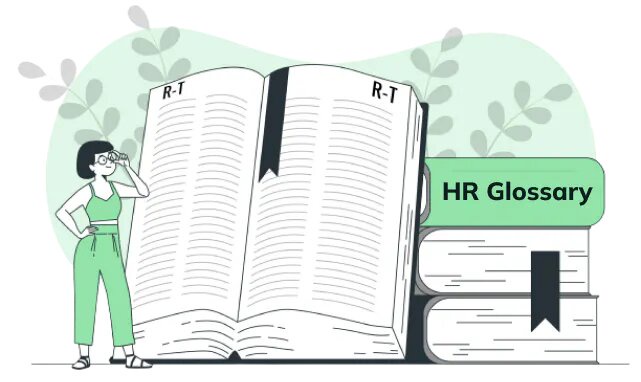In the dynamic landscape of human resources (HR) management, understanding the terminology is paramount for effective communication and decision-making. Whether you're a seasoned HR professional or just stepping into the field, having a comprehensive grasp of essential HR management terms is indispensable. This blog aims to serve as your go-to guide, providing a detailed HR glossary that covers a wide array of terms commonly used in HR practices.

Why is it important to have a HR Glossary handy
Having a HR glossary readily available is crucial for effective communication and understanding within any organization.
- It serves as a reference tool that helps ensure consistency in terminology and clarity in communication among HR professionals, managers, and employees.
- With the ever-evolving landscape of human resources, including legal regulations, industry-specific jargon, and emerging trends, having a glossary handy facilitates quick access to definitions, explanations, and interpretations.
- This not only aids in onboarding new employees and training initiatives but also mitigates misunderstandings and promotes a cohesive workplace culture.
Moreover, a comprehensive HR glossary promotes transparency, fosters compliance with policies and procedures, and ultimately contributes to the overall efficiency and effectiveness of HR operations.
Here is a detailed HR glossary that covers commonly used HR management terms:

Recruitment and Selection
Recruitment: The process of actively seeking out, attracting, and hiring qualified candidates for a job vacancy within an organization.
Selection: The process of assessing candidates' qualifications, skills, and suitability for a specific job role through various methods such as interviews, tests, and assessments.
Employee Relations
Employee Relations: The management of relationships between employers and employees, focusing on maintaining a positive work environment, resolving conflicts, and ensuring compliance with labor laws and regulations.
Grievance: A formal complaint raised by an employee regarding a workplace issue, typically related to working conditions, treatment, or company policies.
Performance Management
Performance Appraisal: A formal evaluation process conducted by managers to assess an employee's job performance, provide feedback, and set goals for improvement.
Key Performance Indicators (KPIs): Quantifiable metrics used to measure an employee's performance and effectiveness in achieving organizational objectives.
Training and Development
Training Needs Analysis (TNA): The process of identifying gaps in employees' skills, knowledge, and abilities to determine training requirements.
On-the-Job Training (OJT): Training provided to employees within the actual work environment, allowing them to learn and acquire new skills while performing their regular job duties.
Compensation and Benefits
Compensation: The total rewards, including salary, bonuses, and incentives, provided to employees in exchange for their work and contributions to the organization.
Benefits: Non-monetary rewards offered to employees, such as health insurance, retirement plans, paid time off, and wellness programs.
Human Resource Information System (HRIS)
HRIS: A software system used to manage HR-related tasks and information, including employee records, payroll, benefits administration, and recruitment processes.
Applicant Tracking System (ATS): A component of HRIS used to streamline and automate the recruitment process by tracking job applicants, managing resumes, and scheduling interviews.
Compliance and Legal Issues
Equal Employment Opportunity (EEO): The principle of ensuring equal opportunities for all individuals regardless of race, gender, age, religion, disability, or other protected characteristics.
Fair Labor Standards Act (FLSA): A federal law in the United States that establishes minimum wage, overtime pay, recordkeeping, and child labor standards for employees.
Conclusion
A comprehensive HR glossary serves as a vital tool for organizations, facilitating effective communication and understanding within the workforce.
By providing clear definitions of key HRMS terms and concepts, it promotes consistency in usage and fosters a shared language among employees, managers, and HR professionals.
Additionally, a well-structured glossary enhances efficiency in training, implementation, and troubleshooting processes related to HRMS systems, ultimately contributing to improved productivity and organizational effectiveness.
Therefore, investing in and maintaining an up-to-date HRMS glossary can significantly benefit an organisation by streamlining operations, reducing misunderstandings, and empowering stakeholders with the knowledge needed to leverage HRMS technology effectively.


No comments yet